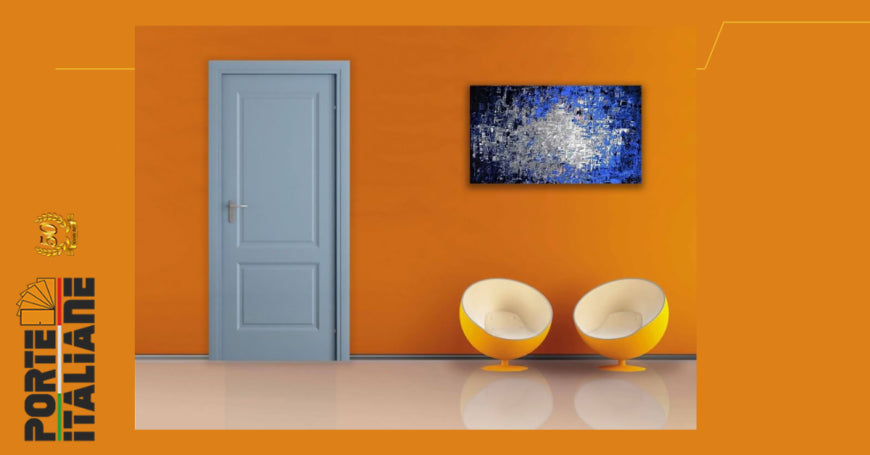Interior door colors: how to choose based on walls and furniture
Choosing the colors for the interior doors of the house is often an important step. After deciding on the style, design and arrangement of the furnishings, opting for the right fixtures can give your home an edge. According to some, walls and doors must be the same color. Others, however, are of the opposite opinion. In this article we will analyze both approaches, in order to give you all the information you need to be able to decide the best for modern white doors to choose colored doors.
The colors of the interior doors and furnishings should be the same
The first approach sees a substantial equality between the colors of the internal doors and those of the walls and furnishings. In this case, an environment with a uniform, organic design is evidently created, capable of transmitting a precise sensation. Following this method can be useful in the case of, for example, designing a bedroom.
Choosing interior doors with cold colors, such as blue, and combining these with walls and furnishings of the same shade creates a relaxing environment, suitable for rest. Care must be taken, however, with the shade chosen: turning on a shade that is too dark could lead to an undesirable result. In addition to making the room seem smaller, and therefore potentially oppressive, dark shades could make the room appear too dark even during the day.
Fixtures and fittings should have very different colors from each other
On the contrary of those who believe that windows and doors must be of the same colour, there are those who prefer to break up the chromatic harmony. This specific approach has the primary objective of creating a focal point within the room. With white walls, for example, it is often chosen to install a dark colored fixture, in order to create a reference that helps to orient oneself in the space. The choice of colors for the furnishings should follow the same criterion. Not to mention that the contrast between very different colors, especially black and white, gives a contemporary and modern look.
Even in this case, however, it is good to be careful. Choosing an approach based on interior door colors that are different from that of walls and furnishings is useful in the case of large rooms. If contrast is sought in small rooms, the danger is that of altering the perception of space.
This is the same risk associated with when you choose to use the same shade for both interior doors and furnishings. In the latter case there is a danger of creating an overly oppressive environment. If you choose to break up the chromatic harmony in a small room, on the other hand, you risk turning too much attention towards the window frame. In this way, a sort of funnel effect is created which helps to decrease the perception of the space at one's disposal. In this case, the advice is to opt for less marked shades.
The possible intermediate approaches between the various interior door colors.
Almost infinite combinations are available between the two approaches presented. For example, it is possible to choose totally different colours, creating an environment full of suggestions. The danger, in this case, is overloading the emotional impact of the room too much, creating an unpleasant visual effect. It is true that the wise use of colors can help inventiveness and imagination, and therefore this option should not be discarded in the case of working environments where creativity is the order of the day.

